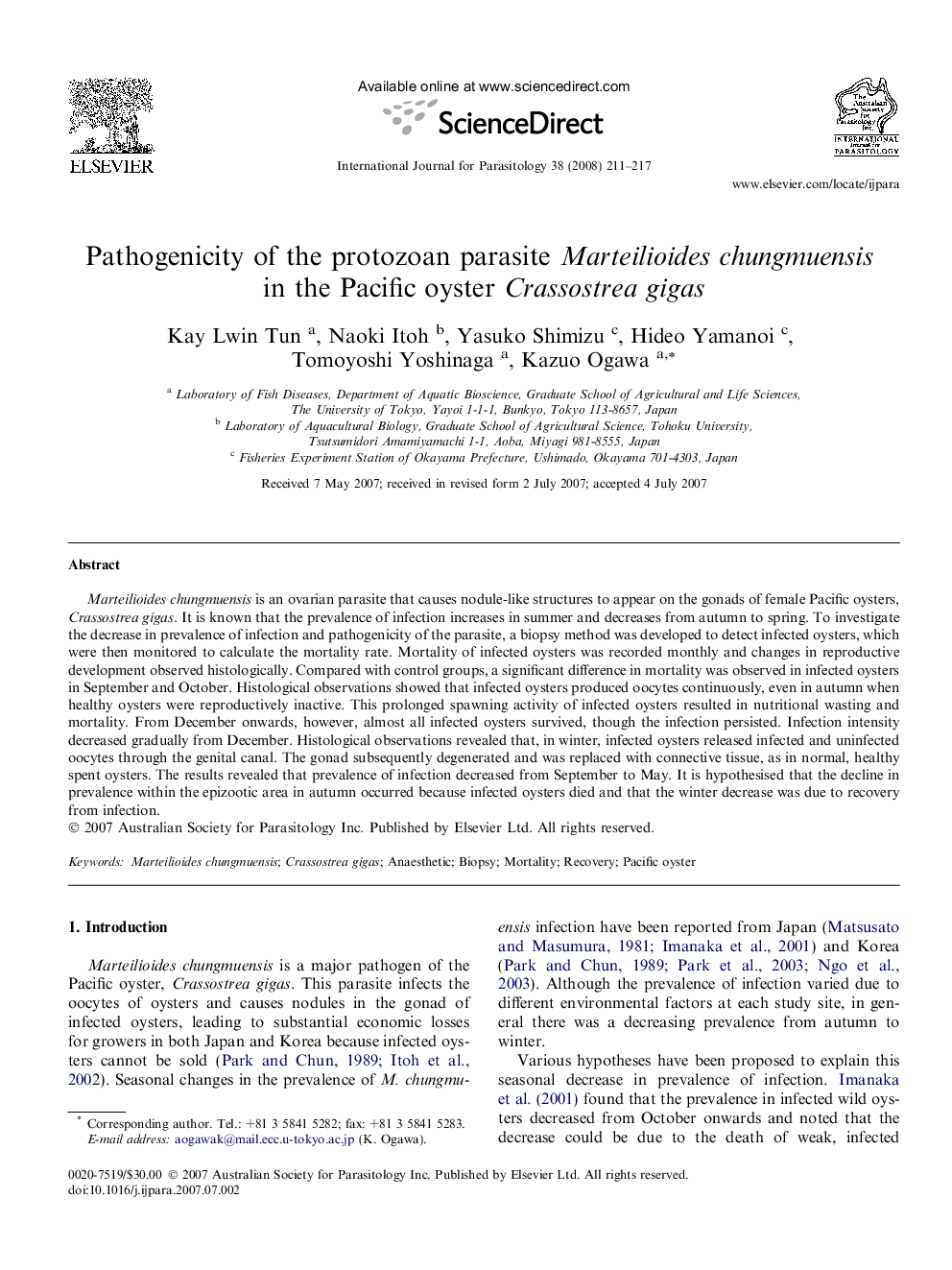| Article ID | Journal | Published Year | Pages | File Type |
|---|---|---|---|---|
| 2436664 | International Journal for Parasitology | 2008 | 7 Pages |
Marteilioides chungmuensis is an ovarian parasite that causes nodule-like structures to appear on the gonads of female Pacific oysters, Crassostrea gigas. It is known that the prevalence of infection increases in summer and decreases from autumn to spring. To investigate the decrease in prevalence of infection and pathogenicity of the parasite, a biopsy method was developed to detect infected oysters, which were then monitored to calculate the mortality rate. Mortality of infected oysters was recorded monthly and changes in reproductive development observed histologically. Compared with control groups, a significant difference in mortality was observed in infected oysters in September and October. Histological observations showed that infected oysters produced oocytes continuously, even in autumn when healthy oysters were reproductively inactive. This prolonged spawning activity of infected oysters resulted in nutritional wasting and mortality. From December onwards, however, almost all infected oysters survived, though the infection persisted. Infection intensity decreased gradually from December. Histological observations revealed that, in winter, infected oysters released infected and uninfected oocytes through the genital canal. The gonad subsequently degenerated and was replaced with connective tissue, as in normal, healthy spent oysters. The results revealed that prevalence of infection decreased from September to May. It is hypothesised that the decline in prevalence within the epizootic area in autumn occurred because infected oysters died and that the winter decrease was due to recovery from infection.
